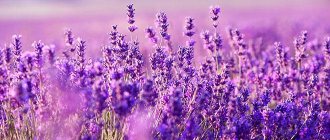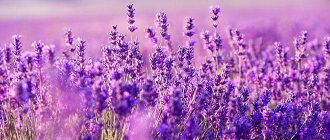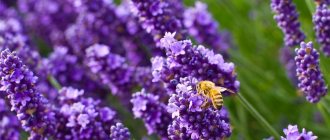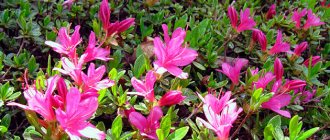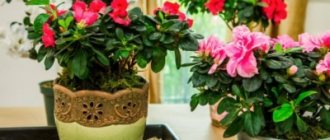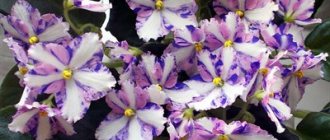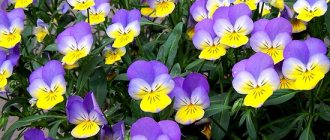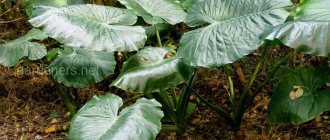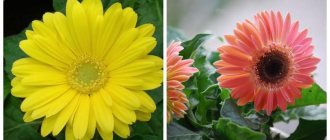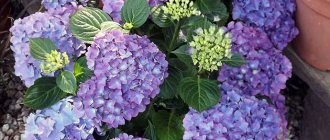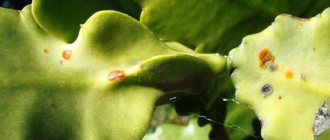Fragrant, shining with noble silver and purple, spicy lavender is a favorite plant of many gardeners. Dry lavender inflorescences stand beautifully in bouquets, and in the garden the plant is rightfully considered one of the brightest. But if you love lavender and its aroma and want to admire the bushes all the time, you should try growing this charming subshrub indoors. This is not the easiest potted plant, it requires attention and care. But in and out of bloom, indoor lavender captivates with its textures and character.
Indoor lavender - capricious, but inimitably effective
Lavender: plant varieties and its origin
Lavender does not have a central stem. This plant belongs to the Lamiaceae family. Inflorescences appear on its shoots in the form of ears of white, pink or purple color, depending on the variety. It has a pronounced period of dormancy and growing season.
Lavender in a pot
This plant has 47 species and several hybrid forms, differing in bush height, bud shade and resistance. Some species are considered suitable exclusively for open ground. Others take root quite well at home.
Varieties for growing in pots
The most common varieties for indoor growing include:
- Lavender angustifolia (English). This perennial evergreen subshrub is considered the most unpretentious and frost-resistant species cultivated in Russia. The height of this plant reaches a maximum of 30 cm. The inflorescences are on long stems, which are covered with narrow, elongated leaves of a gray-green hue. The flowers are blue with shades of lilac and violet. The flowering period is July-August.
- Lavender latifolia (French). This species is characterized by the presence of wide leaves and heat-loving behavior, and is the ancestor of decorative varieties. Caring for him is necessary in exactly the same way as for other relatives. This lavender has beautiful flowers in various shades. The plant does not have a pronounced odor, which the English variety has. This species blooms from April or May to July. But at the end of summer, flowering may occur again. The height does not exceed 60 cm. The most beautiful representative of the species is lavender with butterfly-shaped flowers.
- Lavender serrated. The plant received this name because of its rugged, silver-colored leaves. Large fragrant flowers appear in the middle of the summer season. This plant is a heat-loving species. Designed for indoor growing.
On a note! Which variety to choose for yourself is up to everyone to decide for themselves. They are about the same in terms of care.
Origin of the plant
Lavender has been known since ancient times. It is native to the Mediterranean, Canary Islands and India. In the distant past, dried lavender flowers were used for water treatments. The ancient Romans added it to the bath water to wash their hands before eating, and used it to wash things. Because of this, the name of the plant is translated from Latin as “to wash.”
Lavender was used as a medicine to protect against infectious diseases. When there were epidemics, the Romans made lavender fires in front of their houses. Over time, lavender became known throughout the world. Essential oils were made from it, lavender became a symbol of love and beauty, it was grown in gardens and used for cooking.
Lavender field
Briefly about the history of appearance
Lavender in a pot on the windowsill
Lavender is an ancient plant; the specific date of its appearance remains in question. There is an opinion that these flowers appeared even before the appearance of man. It was also used by the inhabitants of Ancient Egypt for mummification and in the field of perfumery. The plant got its name in Ancient Rome, where the flowers were added to baths; in translation, lavender means “to wash.”
Interesting! From the middle of the 16th century. English flower growers began to create new varieties of plants. From there the flower spread throughout Europe, and then appeared in Russia.
Lavender in a pot: care at home
Lavender - planting and care in open ground
Not everyone grows lavender in a pot in their apartment. Grooming is very important to her. Providing all necessary conditions will lead to a positive result:
Temperature
Lavender is sensitive to extreme temperature changes. For each variety, you need to clarify the minimum and maximum temperature values. Lavender generally does not do well at temperatures below 5°C. The shrub prefers to bloom at a temperature of 18-20 °C. Overheating of the root system is dangerous for the plant. It will lead to rapid drying and death of the flower.
Lighting
Lavender requires good lighting. Any shadow will lead to discomfort. It is recommended to place lavender only on window sills on the east or south side. During the plant's dormant period and on cloudy days, lighting should be provided. The minimum daylight hours for lavender is 10 hours. In winter, you can illuminate the flower with a fluorescent lamp.
Watering
The plant does not require strong and abundant watering. It is recommended to water 1-2 times a week in summer at moderate temperatures. In winter, the plant should be watered no more than once every 2 weeks. Watering is reduced only during the dormant period. The water temperature should be similar to room temperature. Watering should be done early in the morning or in the evening.
Spraying
The plant requires regular spraying. It is especially necessary in winter if the flower is located close to the battery.
Humidity
Overwatering poses a greater threat to this plant than lack of moisture. However, severe drought in the soil will negatively affect the flower. If lavender suffers from central heating or dry air, it is recommended to place humidifiers near it.
Priming
For planting, you should use a universal soil designed specifically for house flowers. If desired, you can make a special soil. To do this, you need to mix sand or fine gravel, as well as turf, humus, and leaf soil.
Feeding
Lavender does not require soil containing many nutrients. Provided it is replanted every year, it can go quite a long time without feeding. However, for active and spectacular flowering, it is recommended to feed the plant every 2 weeks from spring to autumn.
Watering lavender
Important! Conventional mineral fertilizers intended for indoor plants are suitable as fertilizing. In early spring it is worth using nitrogen fertilizers. During the period of buds and flowering, potassium-phosphorus fertilizers are suitable. Potassium should be contained in larger quantities.
Lighting requirement
The plant is demanding in terms of lighting; if there is not enough light, it will not bloom luxuriantly.
In an apartment it should be kept on a south-facing window. If there is too much light and bright rays of the sun, you should remove the flower to a shady place in the room. In summer, a container with lavender is taken out to an open loggia, terrace, or courtyard.
In our country, daylight hours decrease with the onset of winter, and daylight for the flower becomes insufficient. In winter, the plant is illuminated using fluorescent and special phytolamps for at least 8-9 hours a day.
Features of winter care, dormant period of indoor lavender
The main question that arises for those who have indoor lavender: how to care for it during the dormant period? When the bush fades, it must be pruned and rid of dry leaves.
Lily in a pot - care at home
During the winter, the bush falls asleep. At this time, it is recommended to move it to a cool place away from hot radiators and heaters. It is necessary to maintain the room temperature at 17-19 °C.
Important! The plant should be watered as little as possible in winter. This will ensure the lavender bush blooms profusely in the summer.
Trimming lavender
Which one is better?
When does Lavender bloom?
The pot must be light. Dark walls heat up faster in the sun, and the earth becomes dry. And the color combination of a light flowerpot, lavender inflorescences and pubescent greenery pleases the eye and evokes associations with the Mediterranean coast.
What conditions need to be taken into account when choosing:
- when planting young plants. When planting young plants, you need to remember that after the formation of roots there will be a period of active growth. This means that the pot must be selected so that the root system has room for development, but at the same time, while the plant is young, there is not a lot of soil free from roots. The required volume is approximately 2 liters;
- when transplanting old ones. Old plants are replanted annually. If you want the lavender bush to continue to grow in size, then use a larger pot than the old one. If the plant should remain the same size, the roots are shortened during replanting and the size remains the same;
- for different types of irrigation. If it is possible to provide regular spot watering, then you should opt for a clay pot. Otherwise, it is better to choose ceramics or plastic, providing the lavender with high-quality drainage;
- landing on the street. Lavender for street landscaping is planted in containers and flowerpots. It must be remembered that if the flowerpot does not have holes for water drainage, a drainage layer at the bottom is required.
When and how does indoor lavender bloom?
Hyacinth in a pot: home care
The flowers of the bush are formed in June. The plant can continue flowering until autumn, or more precisely until October. During flowering, the plant's flowers bloom. They produce inflorescences that turn into spikelets. Each spikelet contains 6-10 buds.
The leaf shape of each species may be different. To the above types of shrubs it is worth adding:
- manstead, whose purple inflorescences rise above the stem;
- Hidkot, which has highly branching shoots and large flowers of a blue-violet hue;
- southerner, requiring stratification for growing at home;
- Stehadskaya, which has inflorescences in shades such as white, cherry, lilac, purple and green;
- butterfly with flowers of blue, lilac and dark purple shades.
Lavender blossom
Possible diseases
Health problems with lavender are uncommon, but some difficulties can arise due to improper care. Let's look at the most common lavender diseases:
- Excessive watering leads to yellowing of the shoots and rotting of the root system. In this situation, the amount of water must be reduced.
- The bush is being attacked by a leafhopper. This is a pest that feeds on plant leaves. The bush must be sprayed twice with phosphamide emulsion of 40% concentration.
- Lavender may be threatened by septoria. A suspension of copper oxychloride helps to get rid of this disease: 3-4 grams of powder are diluted in a liter of water, the flower is sprayed with this composition 2 times with an interval of 15 days.
How does indoor lavender reproduce?
Lavender propagates in two ways: from seeds and using cuttings.
Seeds
The seed growing method is rarely used because it takes a long time. To grow a lavender seed, you need:
- Sow it in a prepared container with sandy soil.
- Water, bury and leave for 30-40 days. The temperature should be from -5 to +5 degrees.
- Afterwards, transfer the box with seeds to a well-lit, warm place for the first shoots to appear.
- Plant in open ground in May.
Important! If you pre-stratify the seed, the seed will sprout much faster.
Cuttings
The method of propagating lavender shrubs using cuttings is more effective. First you need to cut annual shoots from the plant. Then they need to be divided into 10 cm sections. The lower part should be rooted at an angle of 45 °C and treated with a root formation stimulator. After this, the cuttings should be immersed in a 1:1 mixture of sand and peat. They are covered with a film, after rooting the cuttings need to be planted in pots.
Stratification of seed material
The first stage in growing lavender begins with stratification, which increases the germination of seed material several times.
The easiest way to carry out the required procedure is to use the refrigerator.
The non-woven material is placed on the bottom of a container with a lid, the seeds are laid out and covered with either cotton pads or the same material, a small amount of water is added and excess moisture is drained. For 3 days, place the container with the seeds in a warm place and wait until the seeds swell. Now is the time to put the container in the refrigerator in the vegetable compartment. The seeds will begin to germinate in about 30 days, and they can be planted at the moment when part of all the seeds selected for planting have sprouted.
Replanting indoor lavender
To replant the plant, you will need a plastic pot with drainage, expanded clay, soil enriched with potassium, perlite glass to improve soil properties, and Zircon growth stimulator for watering.
Step-by-step instruction:
- Take a container and mix 5 liters of earth with 1 liter of perlite in it.
- Pour expanded clay onto the bottom of the lavender pot so that air flows from below to the plant, and the top layer of soil never remains in standing water. The layer should be 2-4 cm from the bottom.
- Pour soil with perlite into the pot and make a hole.
- Take a bush and plant it in a hole.
- Add 10 ml of growth stimulator to 5 liters of water at room temperature and pour this around the edges of the pot.
- After the water has drained, fill the holes that appear with earth.
Planting lavender and caring for it at home is not that difficult.
Lavender transplant
Planting correctly
Once the planting containers and soil are ready, and the seeds have undergone stratification, it’s time to start planting.
To do this you need:
- Place the soil in a container, level it, but do not compact it.
- Moisten the soil using a spray bottle.
- Plant the seeds, keeping a distance of 1.5-2 cm between them and sprinkle with a little soil.
- Cover the container with film.
The seeds will germinate in a warm and well-lit place, where the containers should be placed. The soil is periodically sprayed to maintain light moisture. If all conditions are met correctly, then after 14 days the first shoots will begin to appear. Now you need to remove the film and move the containers to a room where there is the most light. If there is insufficient lighting, you need to take care of additional lighting.
Picking is carried out when the seedlings have 3-4 true leaves. An important point: when replanting, you need to take into account that small plants have a good root system, and therefore the procedure is carried out very carefully, trying not to injure the roots.
Possible problems in growing indoor lavender
A shrub may stop growing if its root hits the bottom of the pot. It is recommended to select deep pots for planting. The room in which the plant is grown must be constantly ventilated. Growth will slow down in a stuffy room. You can ventilate the plant on the balcony.
Do not overdry the soil. The plant should not dry out, otherwise nothing will help it. Excessive moisture can lead to gray rot. In this case, the stems begin to wither. If a bush is affected by gray rot, it is recommended to replant the plant.
If you follow all the rules of care and provide this fastidious plant with the proper conditions, it will respond to care with beautiful flowering and a pleasant aroma.
Botanical description of Lavandula dentata
The bush is spreading and can grow up to 1.5 m in diameter . The stems of Jagged lavender are lightly pubescent and grow up to 1 m in height. The root system of lavender is powerful, taprooted, and well developed.
The leaves are 40 mm long with unusual jagged edges. Soft to the touch, light green in color, covered with delicate light fibers.
The buds are small, collected in capitate inflorescences of a soft lilac color . At the top of the bud there is a bract with larger flowers and a rich purple hue. Blooms from mid-summer until autumn.
The aroma is emitted by all parts of the plant: stems, leaves, flowers. The scent of Jagged Lavender is especially noticeable in midsummer.
This is what Serrated Lavender looks like in the photo:
Characteristics
Toothed lavender is a heat-loving plant and grows exclusively in the southern regions; it thrives on the coasts of the Black and Azov Seas. Drought and hot sun are not scary for her. In temperate latitudes, this variety will not survive winter frosts . The average winter temperature for this plant is only -5°.
It blooms in July with medium-sized purple spikelets; the upper flowers are larger than the lower ones and exude a fragrant lavender aroma.
Average prices for seedlings
In online stores you can purchase Dentata lavender in the form of seedlings, saplings and mature bushes. Its cost depends on the shape and age of the plant .
- Lavender seedlings Dentata size P8 (8x8x7 cm) are offered for 175 rubles.
- Seedlings in container C1 (1 l) - for 250-280 rubles.
- Adult 3-year-old lavender Jagged lavender bushes can be ordered at a price of 470-500 rubles. behind the bush.
Subspecies
The most famous subspecies of Jagged Lavender is one variety - Royal Crown. It received this name due to the bracts with larger, richly purple flowers at the top. This is what amateur flower growers grow on their plots. This subspecies has an award from the British Royal Horticultural Society - the Award of Garden Merit, which is awarded every year.
There are also subspecies of this variety - Goodwin Creek Gray, Agnata, Meerlo. Meerlo lavender differs from other species in the uneven color of its leaves, for which it is called variegated. But all these subspecies are less popular and little known among gardeners than Royal Crown.
